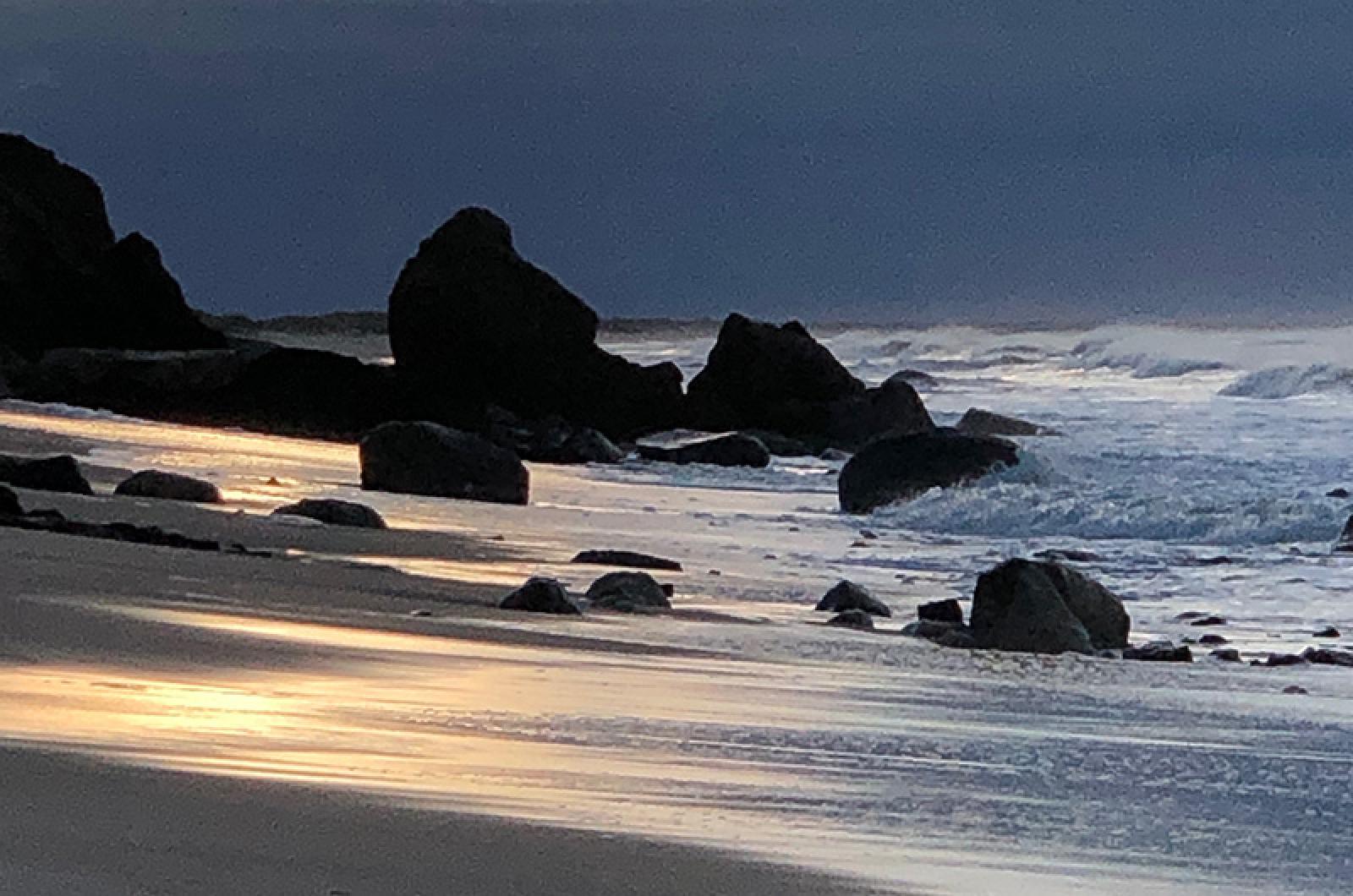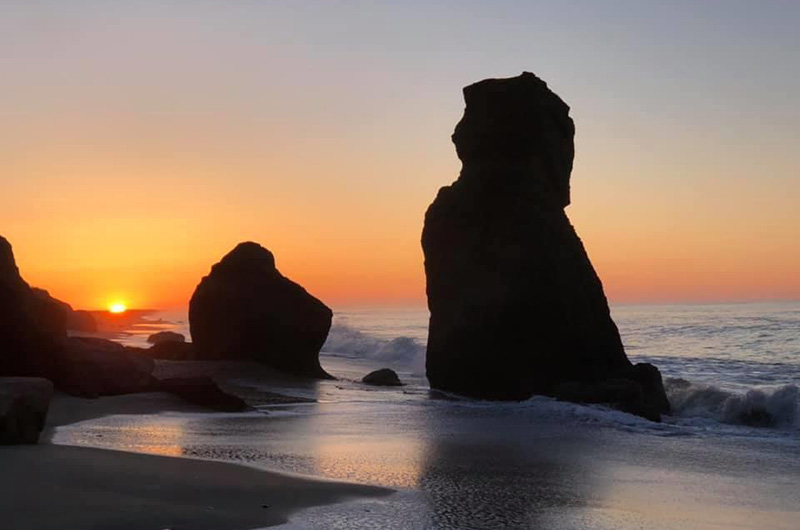The last finger of the iconic cliffs at Lucy Vincent Beach tumbled into the ocean Friday night, culminating a long but rapid erosion process at the famed Chilmark beach.
One of the most photographed landmarks on the Island, the cliffs are also archaeologically significant, with some 10,000 years of history buried in the land forms there that are constantly shaped by the sea.
Longtime Chilmark resident Helen Neumann saw that the rock formation had fallen at approximately 6 a.m. Saturday, when she went to take her daily sunrise beach walk. Ms. Neumann said there had been strong wind and waves at the beach on Friday morning.
“I knew it was coming as I’d seen the accelerated erosion,” Ms. Neumann said. “But it still felt like a blow to my heart.”
Over the past two decades, rough winters and usually vicious weather systems have taken their toll on the once-sprawling cliffs, first dragging them into the ocean and splitting the beach in two — and then slowly whittling them away. The erosion process, however, had left something remarkable in recent years — a majestic rock spire that looked as if it had sprung out of nowhere from the sandy beach and sea floor.
It was this spire that came down Friday night.
Beachgoers flocked to the Atlantic-facing shoreline Saturday, a warm and sunny day after weeks of rain and cold, to take in the changed landscape.
John O'Donnell, a captain in the Oak Bluffs fire department, said he read the news online and decided to take his kids to examine the ruins. He said he grew up on the Island, and has seen the gradual collapse of the cliff for decades.
In October 2012 the cliffs at Lucy Vincent were particularly hard hit when the remnants of Hurricane Sandy raked the Island.
Chilmark selectmen announced last week that the beach would remain open to residents this summer, albeit with restrictions due to the ongoing pandemic. They did not anticipate that the spire would be gone as well.
The inevitability of the change — and the force of nature it represented — didn’t make the fallen cliff any less tragic for Ms. Neumann Saturday morning.
“I cried,” she said.
Will Sennott contributed reporting.








Comments (51)
Pages
Comments
Comment policy »